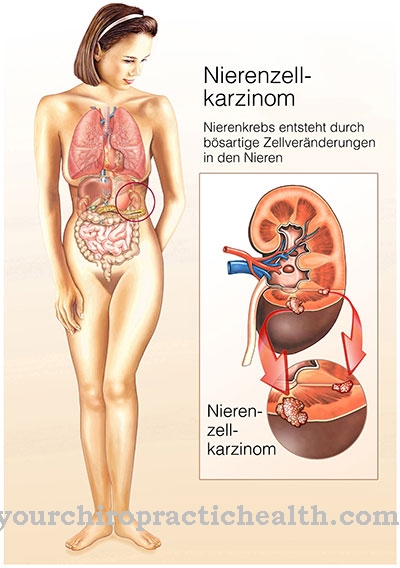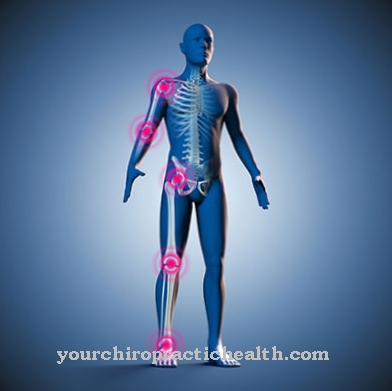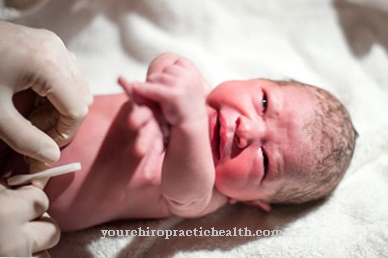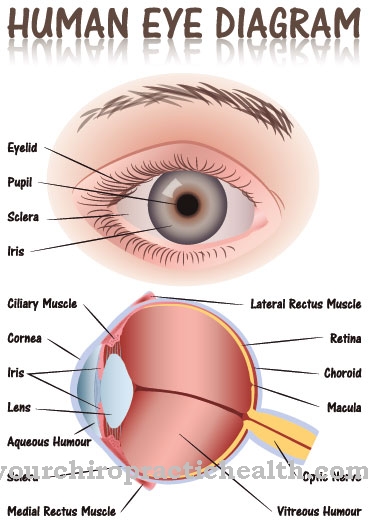Brain tumors are very rare; only about 2 percent of all new cancer cases affect the brain. However, when a brain tumor is diagnosed, it is a so-called one in about a quarter of all cases Astrocytoma. This makes astrocytomas one of the most common types of brain cancer. Their degrees of severity and the resulting chances of recovery differ greatly.
What is an astrocytoma?
.jpg)
An astrocytoma arises from degenerate brain cells. More precisely, from degenerate astrocytes, also called star cells, which belong to the supporting tissue of the human brain and are collectively called glial cells.
There are different types of astrocytomas that differ greatly in terms of their severity and prognosis. Astrocytomas can be both benign and extremely malignant tumors. Doctors determine the severity of the disease by comparing the similarity of the tumor tissue with the surrounding healthy tissue.
The more similar the degenerate tissue is to the healthy one, the more harmless the tumor is. Astrocytomas are divided into WHO grades. The astrocytoma with the lowest WHO grade I, the pilocytic astrocytoma, occurs almost only in children and young adults, is benign and has a positive prognosis. WHO type II tumors, the differentiated astrocytoma, are still benign, but can degenerate into malignancy. Finally, anaplastic astrocytoma or WHO type III is malignant.
After all, the astrocytoma with the worst prognosis is that Glioblastoma. This shows a very rapid and above all diffuse growth, i.e. it is not clearly defined and therefore cannot usually be surgically removed. The younger a person is, the higher the chance of a benign astrocytoma. The malignant variants mostly affect middle-aged men.
causes
Little is known about the causes of astrocytomas. What is certain is that brain tumors of this type occur particularly frequently after radiation treatment. For this reason, radiation treatments and imaging procedures in medicine should be used as rarely as possible and only if there is sufficient indication.
Those who suffer from the hereditary disease neurofibromatosis also have an increased risk of WHO type I astrocytomas. Other causes are not known or have not yet been clarified. However, various studies have shown that cell phone radiation has no effect on the incidence of brain tumors.
Symptoms, ailments & signs
The patient can perceive the first signs of a possible brain tumor himself. In most cases, you will experience memory and concentration problems. Everyday things are forgotten or simply cannot be remembered and coped with. The concentration problems are often linked to language and word finding disorders, which can develop into aphasia and complete loss of language.
Orientation problems are observed as well as balance and locomotion difficulties. For example, it is usually no longer possible for those affected to independently go to a desired destination by bike or car. In the initial phase, when the physical symptoms are even weaker, a trip is started, but the destination is lost on the way. Most patients notice their disorientation at first.
Visual disturbances are also a possible symptom of an astrocytoma or glioblastoma. Usually they manifest themselves in double or multiple images. In rarer cases, a restriction of the field of view is also reported, the person affected then only perceives sections of the entire image.
Diagnosis & course
Astrocytomas can develop in very different parts of the brain. The symptoms differ depending on the localization. Typical signs of such a glioma, however, are epileptic seizures, changes in personality and increased intracranial pressure. The latter manifests itself initially as dizziness, nausea and vomiting.
If the astrocytoma is located in the spinal cord, it can also lead to symptoms of paralysis up to paraplegia. Visual disturbances are also not an uncommon symptom. Astrocytomas can only be determined with certainty, however, by means of an imaging method such as computed tomography or MRI.
Complications
Due to the limited space within the skull, space-occupying processes have a much more dramatic effect than in other parts of the body. Astrocytoma complications arise primarily when the tumor grows rapidly or infiltrates the surrounding brain structures. The faster the growth takes place, the greater the pressure increase inside the skull.
As a result of the intracranial pressure, there is a local compression of nerve tracts and brain centers, which can lead to death without medical treatment. In the case of more highly malignant astrocytomas, extensive edema also occurs, which further increases the space-occupying effect. Temporary or permanent brain damage can occur as a result of the tumor.
The complications of astrocytomas include neurological deficits (hemiparesis, changes in character, visual field deficits), hydrocephalus and cerebral hemorrhage. The primary goal of astrocytoma treatment is to reduce tumor mass. The therapies used can themselves have severe side effects and lead to complications.
In order to improve the initial situation for further treatments, neurosurgeons try to shrink the tumor as much as possible without damaging healthy tissue. Intracranial pressure increases and postoperative hemorrhages are possible complications after surgical interventions. Stereotactic radiation therapy for astrocytomas is used to specifically kill tumor cells. As a complication of the body's own inflammatory processes, massive brain edema and a decompensated mass can occur.
When should you go to the doctor?
If an astrocytoma is suspected, a doctor should be consulted immediately. Typical signs such as epileptic seizures, nausea, vomiting, dizziness or visual disturbances should be clarified immediately. Other warning signs are paralysis and seizures as well as general physical or mental deficits. If one or more of these symptoms occur, a doctor should be consulted for further evaluation.
This is particularly true if the symptoms are noticed suddenly, after radiation treatment or in connection with the hereditary disease neurofibromatosis. Then there is a suspicion that it is a brain tumor. Prompt treatment is always required for astrocytomas, whether benign or malignant.
If symptoms recur after the treatment of an astrocytoma, the attending physician must be spoken to. The faster the diagnosis and therapy, the better the chances of recovery, even with new diseases. This applies not only to astrocytomas, but to all types of tumors. Therefore, unusual complaints that cannot be traced back to a specific cause should be clarified immediately.
Doctors & therapists in your area
Treatment & Therapy
If possible, the tumors are surgically removed as far as possible. This is followed by a tissue test to determine the WHO grade of the glioma. Not all astrocytomas are operable, however; this possibility depends on the location of the tumor in the brain and its diffusivity. The more clearly a tumor is differentiated from healthy tissue, the sooner it can be operated on.
But even if the entire brain tumor cannot be cut out, the treating doctors at least try to remove parts of the astrocytoma. Depending on the severity of the tumor, the operation will be followed by radiation treatment and possibly chemotherapy. Remaining tumor residues are risky because these cells can continue to grow. However, at least only a partial removal means a reduction in the size of the tumor and thus an improvement in symptoms as well as reduced growth - ergo more time gained.
The brain tissue around the astrocytoma usually swells up considerably, which is why it is necessary to give cortisone preparations before an operation. These cause the tissue to swell. The administration of anti-epileptic drugs can also be considered necessary. As a rule of thumb, the lower the WHO grade of astrocytoma, the more likely it is to be completely removed.
Outlook & forecast
The prognosis of an astrocytoma is to be classified individually based on several factors. The prospect of recovery depends on the location and size of the brain tumor. In addition, there is the age of the patient, possible previous illnesses and the stability of his immune system.
A small tumor in an easily accessible region of the brain has a good chance of a cure.If the patient is also of middle adult age and does not suffer from any other impairments, the chances of being discharged as cured within a few months are good.
The older the patient is and the more previous illnesses there are, the worse the prospects of recovery become. In the case of a brain tumor that is located in an area of the brain that is difficult to access, the chances of recovery also diminish. Often only parts of the diseased tissue can be removed successfully, or there is no way at all to rid the patient of the tumor. The subsequent cancer therapy also weakens the organism.
Patients who have successfully survived the procedure and the therapy still live at the risk of the disease recurring. In many cases, the tumor has spread and new metastases are forming in other parts of the body. Therefore, a timely diagnosis of a brain tumor is essential for a prognosis of the astrocytoma.
prevention
Since the causes of astrocytomas are unknown, specific preventive measures cannot be taken. However, it is recommended that you expose yourself to as little radiation as possible and avoid contact with carcinogenic substances. A healthy and active lifestyle as possible also helps prevent cancer.
Aftercare
Astrocytoma (glioblastoma) tends to recur. Consistent aftercare is therefore very important. This consists primarily of the fact that the patient conscientiously adheres to the follow-up appointments with the treating doctors. In addition, the doctor should always be consulted if there are unusual observations.
Paralysis and sensory disturbances in limbs, as well as seizures or headaches that occur continuously, are among the warning signals. The doctor can also be visited here outside of the scheduled follow-up appointments. If therapies such as radiation therapy, chemotherapy and surgery have only recently been completed, follow-up care also particularly relates to the consequences of these treatments.
The wound conditions of a head operation must be checked and weaknesses that may have resulted from chemotherapy or radiotherapy controlled and, if necessary, treated. It may also be necessary to involve the physiotherapist or occupational therapist in the follow-up care in order to restore the effects of tumors or therapy such as functional restrictions in joints, muscles and nerves as well as possible. This also applies to language disorders, which are not infrequently associated with a brain disease.
The psychological component must also be included in the aftercare. Awareness of a brain disorder scares many people and worries about relapse. Targeted psychological support can help to cope with the disease and give those affected a better quality of life. Psychologists and psychotherapists are valuable contacts here.
You can do that yourself
Self-help in everyday life can be divided into physical and mental areas in the case of an astrocytoma or glioblastoma. Physically oriented self-help depends on the region of the brain in which the glioma is located and which failure symptoms or functional losses are noticeable.
Everyday help can, for example, include motor exercises that improve a functional disorder in the extremities that may have occurred after an operation. The same applies to speech or memory exercises if the tumor has been or has been sitting in a responsible area of the brain. Anyone who suffers from the effects of radiation or chemotherapy can strengthen their immune system at home after consulting their doctor.
A tumor in the brain also causes emotional stress for many patients. Help and information in this context are provided by relevant self-help groups or the cancer information service, which can be found on the Internet and offers advice over the phone. Conversations with friends can also be a relief.
Physical activity and relaxation exercises help to improve well-being. In addition to light endurance training and strength training for weakened muscles, relaxation methods such as progressive muscle relaxation or autogenic training often help to improve well-being. Yoga, too, with a tried and tested mixture of physical and breathing exercises, relaxation and meditation, is suitable for improving the tense situation of the person concerned and increasing the quality of life despite astrocytoma or glioblastoma.

.jpg)


.jpg)








.jpg)

.jpg)
.jpg)











.jpg)